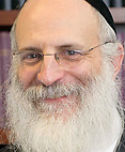| Abstract: |
The efficacy of 3 radiolabeled probes of current interest for imaging herpes simplex virus type 1 thymidine kinase (HSV1-tk) expression in vivo with PET, including 124I- or 131I-labeled 2′-fluoro-2′-deoxy-1-β-D-arabinofuranosyl-5-iodouracil (FIAU), 18F-labeled 9-[4-fluoro-3-(hydroxymethyl)butyl]guanine (FHBG), and 18F-labeled 9-[3-fluoro-1-hydroxy-2-propoxymethyl]guanine (FHPG), was compared. Methods: Two established rat glioma cell lines, stably transduced RG2TK+ and wild-type RG2, were used for paired comparisons of probe accumulation in vitro and for paired comparisons of subcutaneous xenografts produced from these cell lines in athymic rnu/rnu rats. Results: The in vitro paired probe uptake (0-3 h) comparisons in RG2TK+ cells showed that FIAU accumulation was 15-fold greater than that of FHBG and 41-fold greater than that of FHPG. The net accumulation rate values (±SD) calculated for RG2TK+ cells were 0.317 ± 0.066, 0.022 ± 0.001, and 0.0077 ± 0.0003 mL/min/g cells for FIAU, FHBG, and FHPG, respectively. These results and similar uptake studies in RG2 wild-type cells suggest a possible cell membrane transport limitation for FHBG and FHPG. The paired 2-h in vivo uptake studies produced similar differences in RG2TK+ xenografts for FIAU and FHBG (1.22 ± 0.21 vs. 0.074 ± 0.49 %dose/g) and for FIAU and FHPG (1.27 ± 0.14 vs. 0.023 ± 0.008 %dose/g). These differences were clearly visible on the images. FIAU accumulation at 24 h was 1.53 ± 0.40 %dose/g. Plasma clearance was FHBG > FHPG ≫ FIAU. The FIAU images showed significant stomach and some intestinal background radioactivities, whereas hepatobiliary and intestinal background activities were very high for the guanosine analogs (FHBG > FHPG). Dynamic imaging showed early (∼ 10 min) selective localization of FIAU in RG2TK+ xenografts, whereas FHBG and FHPG are being cleared from the HSV1-tk transduced and wild-type xenografts over the initial 2-h imaging period. Conclusion: The in vitro and in vivo results (including the PET images) show that FIAU is a substantially more efficient probe than FHBG or FHPG for imaging HSV1-tk expression, with greater sensitivity and contrast as well as lower levels of abdominal background radioactivity at 2 and 24 h. |






